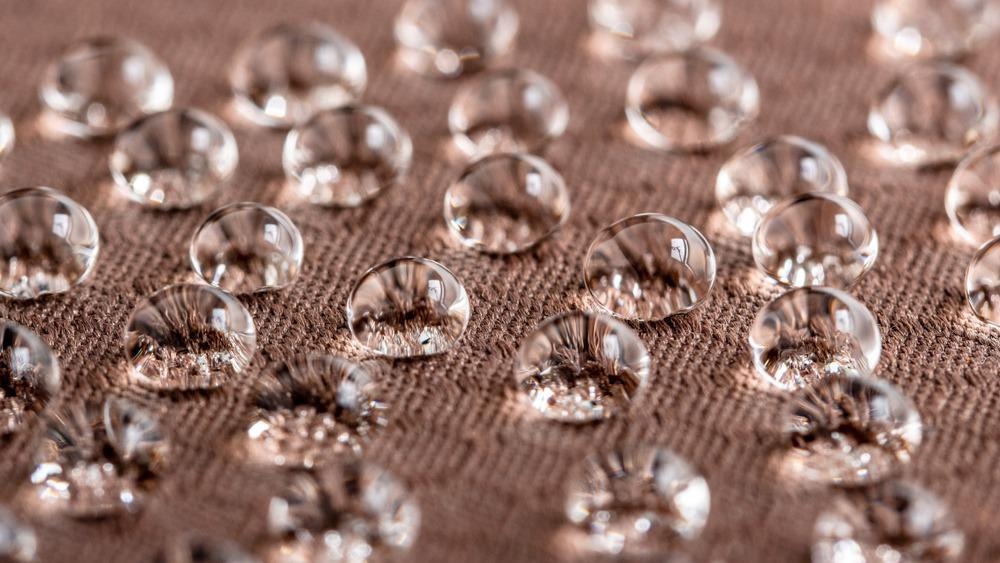Researchers at the University of Central Florida have developed a novel nanomaterial with hydrophobic properties that allow it to remain dry even when submerged in water.

Image Credit: mykhailo pavlenko/Shutterstock.com
The new superhydrophobic nanomaterial opens up the possibility of developing surfaces that can repel water more effectively than those currently available. Eventually, superhydrophobic nanomaterials are likely to be used as water-repellent and electronic sensors to detect toxins.
Hydrophobic Coatings Inspired by Nature
Nature inspired UCF NanoScience Technology Center Professor Debashis Chanda, who led the research team, to use nanostructures to develop revolutionary superhydrophobic coatings to strongly repel water molecules. Materials and substances that repel water contain hydrophobic molecules that do not have an affinity for water.
Examples of hydrophobicity in nature are present all the time. Many species of birds and plants have evolved structures that protect and clean them; aquatic birds have feathers that are coated in preening oils that are produced in the bird’s uropygial glands. Plants have a hydrophobic layer that covers the surface of their leaves, preventing interruption to the flow of nutrients inside by keeping water from entering them.
Chanda and the UCF team took their superhydrophobic inspiration from the lotus leaf. Here, they based the structure of the synthesized nanomaterials on the molecular crystals of fullerenes.
Fullerenes were discovered back in 1985 and are constructed of hollow carbon molecules, either assembled in a closed cage formation, known more commonly as ‘buckyballs’ or as a cylinder, known are carbon nanotubes.
In the current study, the team utilized specific fullerenes known as C60 and C70 due to their ability to bind in a buckyball structure. These nanostructures are stackable, allowing scientists to create tall crystal structures known as fullerites.
The team demonstrated that in coating a surface with a drop of gel composed of fullerites, a superhydrophobic state is induced. Importantly, the cage-like structures of the gel do not alter the properties of the original material being treated, meaning that the gel could be used as a water treatment coating on a wide range of surfaces without the danger of changing their other functionalities.
As a result, the team has created a novel superhydrophobic material with great potential in many applications, such as bacterial disinfection, which has become vital over the COVID-19 pandemic, splitting water electrocatalysis, and hydrogen generation.
The new gel offers a method of carrying out such processes in a way that is better than currently available techniques can offer. For example, with the new gel, the process of splitting electrocatalysis is much easier. Advances in these methods will undoubtedly lead to further innovations, such as more efficient fuel cells. The new superhydrophobic nanomaterial has great potential.
The Future of Superhydrophobic Surfaces
Previous research that has succeeded in developing hydrophobic surfaces has mostly focused on designing microscopic patterns via complex lithography or etching processes. The drawback of such methods is that they cannot be achieved on all types of surfaces; therefore, the range of applications for which they can be used is limited.
Additionally, not all previous attempts to develop hydrophobic surfaces have produced materials that remain fully dry when submerged, as some are limited to the time they can spend within water or the depths they can travel to without becoming wet.
The new research overcomes this major limitation. The team’s fullerite films demonstrate complete resistance to even extreme water conditions, such as exposure to continuous flows of water in multiple directions and being submerged for several hours at significant depths. Numerous tests have proved that materials coated in the fullerite superhydrophobic films remain dry. The team even showed that the film could be used to capture and store gases underwater.
Additionally, the new superhydrophobic surfaces were very simple, easy, and cost-effective to produce, encouraging future industrial use and development.
There is a potential to leverage novel superhydrophobic surfaces into applications in energy storage devices, coatings for protecting electronic devices in humid environments, preventing water corrosion, anti-icing, and desalination.
In the coming years, it is likely that the superhydrophobic coating will be developed in many different areas, most probably in the field of bacterial disinfection, splitting water, electrocatalysis, and hydrogen generation. The medical and healthcare fields and the clean energy sector are industries that will potentially benefit the most from developments in this area of nanotechnology. However, significant research and development are required before the full potential of the novel hydrophobic nanomaterial will be fully realized.
References and Further Reading:
University of Central Florida (2021) Water-repellent nanomaterial inspired by nature. [Online]. Science Daily. Available at: https://www.sciencedaily.com/releases/2021/09/210907160616.htm
Saran, R. et al., (2021) Organic non‐wettable superhydrophobic Fullerite Films. Advanced Materials, 33(32), p.2102108. Available at: https://doi.org/10.1002/adma.202102108
Manoharan, K. & Bhattacharya, S., 2019. Superhydrophobic Surfaces Review: Functional application, fabrication techniques and limitations. Journal of Micromanufacturing, 2(1), pp.59–78.Available at: https://doi.org/10.1177%2F2516598419836345
Disclaimer: The views expressed here are those of the author expressed in their private capacity and do not necessarily represent the views of AZoM.com Limited T/A AZoNetwork the owner and operator of this website. This disclaimer forms part of the Terms and conditions of use of this website.